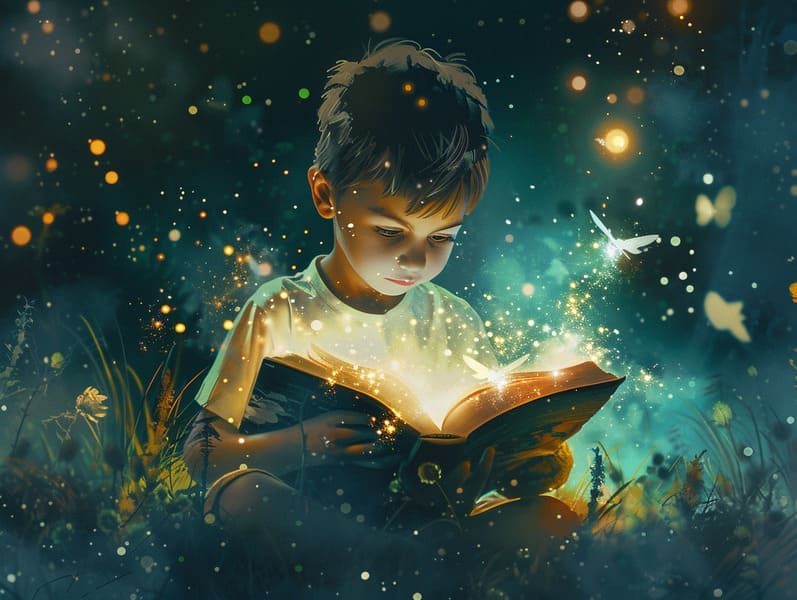
Ancient fairy tales have long histories. These stories have been relayed from one generation to the next long before they were ever documented. They emerged from a variety of cultures, including Asian traditions. They were initially conveyed among adults, often carrying themes and messages relevant to the societal norms and beliefs of the time.
The Brothers Grimm, Jacob and Wilhelm Grimm, were among the first to assemble many of these beloved stories. Their compilation, "Grimm's Children's Stories," included tales like "The Little Glass Slipper," "Hansel and Grethel," and "Little Snow White," which have since become mainstays in the world of timeless fairy tales. Similarly, Hans Andersen's delightful stories, such as "The Mermaid," and "The Duckling's Story," have gained the love worldwide, ensuring their place in the pantheon of timeless fairy tales.
Even though they are old, traditional fairy tales remain as important as ever, especially as bedtime stories for kids. These fantastical tales are now available in diverse formats, including colorful picture books, fantastical animations, and internet fairy tales.
Their lasting presence can be traced to several enchanting factors:
Crucial Morals: Old fairy tales often provide important moral lessons. Fairy tales like "The Boy Who Cried Wolf" teach the importance of sincerity, while "The Tale of the Tortoise and the Hare" point out the merits of resolve and humility. These stories offer young ones clear distinctions between good and bad, shaping their moral compass in a mild yet profound way.
Compassion and Knowledge: Fairy tales frequently illustrate figures facing problems and hurdles, stimulating listeners to resonate with their struggles and boost their triumphs. For instance, "Beauty and Her Beast" conveys the importance of looking past the exterior to know the inner spirit of a being, cultivating warmth and awareness.
Cultural Recognition: Many ancient fairy tales are deeply embedded in the cultural contexts from which they originated. Reading these fairy tales can provide illuminating insights into different traditions, strengthening a sense of cultural understanding and knowledge.
Inventiveness and Imagination: The magical elements in traditional fairy tales—talking beasts—fire up children’s imaginations. These fairy tales transport readers to extraordinary realms, stimulating imaginative ideas and a sense of curiosity that lasts a lifetime.
Ancient fairy tales are not only magical but also enlightening. They work as charming tools in promoting various cognitive and emotional skills in kids. When old fairy tales are read aloud, they promote linguistic abilities by teaching new vocabulary and complex sentence structures. This practice also promotes listening abilities and attention, as children keep up with the story, excited to see what happens next.
Furthermore, exploring the themes and characters of classic fairy tales can enhance intellectual skills and problem-solving abilities. Children are taught to detect patterns, guess what will happen, and comprehend cause and effect. These examinations also promote kids express their thoughts and feelings, promoting their emotional intelligence.
In today’s technological era, the presence of web-based fairy tales has made these tales more attainable than ever. Web platforms and web apps present large libraries of popular fairy tales that can be explored or listened to anytime, anywhere. Fairy tales voiced are particularly liked, providing an charming way for young ones to immerse in these magical stories. Audiobooks and read-to-me stories bring characters and settings to life, often augmented by charming harmonies and harmonies that elevate the tale experience.
The persistent attraction of classic fairy tales lies in their ability to shift to the present while retaining their main lessons. Contemporary reimaginings of these fairy tales often incorporate more varied characters and modern settings, making them relatable to today’s audience. However, the main ideas of valor, sympathy, and honesty remain unchanged, continuing to impact children of all ages.
Fairy tales also offer a sense of peace and comprehensibility. They put forth a tidy narrative with a obvious beginning, middle, and end, often concluding with the resolution of conflicts and the triumph of honesty over deceit. This steadiness can be consoling for the young, distributing a sense of solidity in an fluid world.
Old fairy tales continue to charm and instruct new generations, maintaining their mystique and pertinence in modern society. As kids' bedtime tales, they deliver up a perfect blend of magic and knowledge, encouraging moral values, empathy, and creativity. The proliferation of digital fairy tales and the well-liked nature of fairy tales read aloud assure that these ancient stories remain acquirable to click here new generations.
By preserving and recounting these tales, we continue to treasure the rich tapestry of storytelling and cultural heritage. Whether you are discovering a artistically illustrated book, exploring a virtual collection, or listening on an audiobook, the magic of old fairy tales is always within reach. These narratives convey of the undying ability of narratives and its ability to link us across generations and cultures.
Even if you are delving into a gorgeously illustrated book, viewing a electronic collection, or listening via an narrated book, the elegance of Grimm's fairy tales is always within reach.
These narratives show us of the unwavering force of fairy tales and its ability to connect us across time and space, forging a link that captivates and teaches alike.